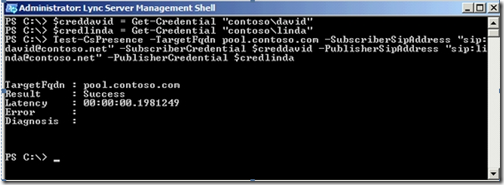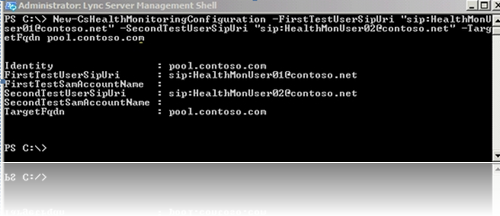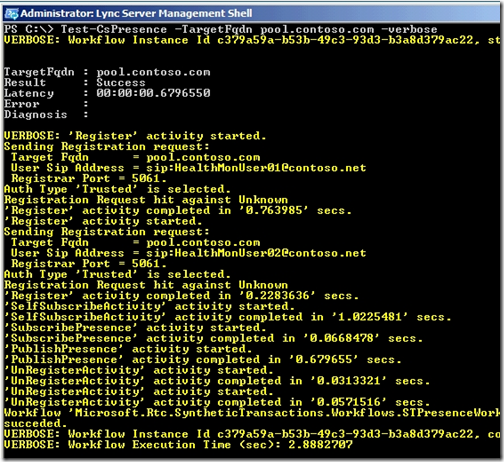Lync Server 2010 Resource Kit New and Updated Chapters available
Some outstanding Lync Server deep details in the Lync Server 2010 Res Kit with new content updates available this month. I would recommend you download these chapters and become familiar with them if you are a Lync Administrator. You can download individual chapters or all the chapters.
Here are the update/new chapters available in the Lync Reskit (it appears more content is being added monthly since there a lot more content than available in April so check the ResKit download link periodically for updated content):
- Technical Overview
- New Features Overview
- Response Group Application
- SharePoint Integration
- Enterprise Voice
- Conferencing and Collaboration
- Troubleshooting Basics
Here is a nice sample excerpt from the Lync Troubleshooting Basics chapter:
Synthetic Transactions—Validators
The Microsoft Office Communications Server 2007 and Communications Server 2007 R2 validation wizards no longer exist in Lync Server 2010. The validation wizards are no longer required because those checks are automatically performed by the Lync Server Topology Builder. Lync Server 2010 introduces the concept of synthetic transactions instead. A synthetic transaction is a mechanism to test end-to-end functionality of the system by using Windows Powershell cmdlets. The cmdlets simulate (end-to-end) transactions as if performed by actual users and can be used for troubleshooting and monitoring the health of the Lync Server environment.
To get the list of all available synthetic transaction cmdlets, open a Lync Server Management Shell window and run one of the following:
Get-Command Test-Cs* -module lync
or
Get-Command Test-Cs* | Format-Table –Property Name,Definition –Auto
Some of the synthetic transactions need user account information to run the tests (for example, Test-CsPresence). There are two ways to provide credential information:
· You can add the credentials as a command-line parameter. To do this, set the password information in a Windows Powershell variable, and then use the cmdlet Get-Credential. Then you can use the variable you get as input for the credential parameter in the Lync Server cmdlet.
Figure 3 shows an example of how to test for presence.
Figure 3. One method for providing credentials
Note. After every invocation of the Get-Credential cmdlet, you will see the typical Windows credential request.
· A more convenient way to provide default test user information, is to use the New-CsHealthMonitoringConfiguration cmdlet. With a health monitoring configuration, you preset the information for the two test users and the Registrar information these users are hosted on. You then reference that configuration by using the TargetFqdn parameter of the synthetic transaction.
Figure 4 provides an example of how to prepare a health monitoring configuration with test users.
Figure 4. Creating a health monitoring configuration
Figure 5 gives an example of how to use this configuration.
Figure 5. Example output of a health monitoring configuration
When looking at the output in Figure 5, the verbose section shows the Registrar, SIP addresses, and ports used for that synthetic transaction. Also notice that the commands provide timing information, which might help when troubleshooting performance issues during certain user actions.
You can grab the updated Lync Server 2010 ResKit chapters here.
Lync Server 2010 Resource Kit tools available for download:
- ABSConfig
- Audio Extractor
- Bandwidth Policy Service Monitor
- Bandwidth Utilization Analyzer
- Call Parkometer
- DBAnalyze
- Error Log Replayer
- Error String Display
- LCSSync
- MsTurnPing
- Network Configuration Viewer
- Response Group Agent Live
- Response Group Export-Import
- SEFAUtil
- Snooper
- TopologyValidator
- Watson Support Tool for Lync Phone Edition
Grab the ResKit tools here.


